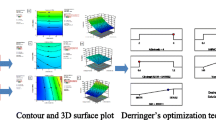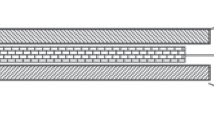Abstract
The purpose of our study was using a computational simulation to develop a long-acting patch of rivastigmine (RVS). A range of patch formulations were screened including pressure sensitive adhesive (PSA), pharmaceutical excipients, and controlled release membranes using transfer simulation based on a mathematical model. Diffusion dynamics parameters for simulated operations were acquired through in vitro release tests (IVRT) and in vitro skin permeation tests (IVPT). The mechanism of controlled release was studied by FTIR (Fourier transform infrared), DSC (differential scanning calorimeter) and molecular docking. Results of a rat in vitro permeation profile showed excellent correlation with the in vivo deconvolution profile (R2=0.998). Experiments testified to transfer of RVS at a relatively uniform speed with high skin permeation (2531.2±142.46 μg/cm2) in 72 h. Pharmacokinetic data obtained in vivo also confirmed stable plasma concentrations over 72 h for the optimized patch, and significant prolongation of both Tmax (11.20±1.79 h) and MRT0-t (33.91±5.33 h). Cmax was controlled with AUC0-t (267.34±24.46 h ng/ml), which was closely comparable to parameters of a commercial Exelon® Patch. The successful development of a long-acting patch of RVS thus underscores the potential of computer aided design in a context of promnesic transdermal delivery.

Graphical abstract








Similar content being viewed by others
References
Bachurin SO, Bovina EV, Ustyugov AA. Drugs in Clinical Trials for Alzheimer's Disease: The Major Trends. MED RES REV. 2017;37(5):1186–225.
BLESA R, BALLARD C, ORGOGOZO J, LANE R, THOMAS SK. Caregiver preference for rivastigmine patches versus capsules for the treatment of alzheimer disease, vol. 69. Hagerstown, MD: Lippincott Williams & Wilkins; 2007. p. S23–8.
Lefèvre G, Callegari F, Gsteiger S, Xiong Y. Effects of Renal Impairment on Steady-State Plasma Concentrations of Rivastigmine: A Population Pharmacokinetic Analysis of Capsule and Patch Formulations in Patients with Alzheimer’s Disease. DRUG AGING. 2016;33(10):725–36.
Zhang D, Wang W, Hou T, Pang Y, Wang C, Wu S, Wang Q. New Delivery Route of Gambogic Acid Via Skin for Topical Targeted Therapy of Cutaneous Melanoma and Reduction of Systemic Toxicity. J PHARM SCI-US. 2021;110(5):2167–76.
Ita KB. Transdermal drug delivery: progress and challenges. J DRUG DELIV SCI TEC. 2014;24(3):245–50.
Naik A, Kalia YN, Guy RH. Transdermal drug delivery: overcoming the skin's barrier function. Pharm Sci Technol Today. 2000;3(9):318–26.
Selzer D, Neumann D, Schaefer UF. Mathematical models for dermal drug absorption. EXPERT OPIN DRUG MET. 2015;11(10):1567–83.
Shi T, Lv Y, Huang W, Fang Z, Qi J, Chen Z, Zhao W, Wu W, Lu Y. Enhanced transdermal delivery of curcumin nanosuspensions: A mechanistic study based on co-localization of particle and drug signals. INT J PHARMACEUT. 2020;588:119737.
Puri A, Bhattaccharjee S, Zhang W, Clark M, Singh O, Doncel G, Banga A. Development of a Transdermal Delivery System for Tenofovir Alafenamide, a Prodrug of Tenofovir with Potent Antiviral Activity Against HIV and HBV. PHARMACEUTICS. 2019;11(4):173.
Jafri I, Shoaib MH, Yousuf RI, Ali FR. Effect of permeation enhancers on in vitro release and transdermal delivery of lamotrigine from Eudragit®RS100 polymer matrix-type drug in adhesive patches. Progress in Biomaterials. 2019;8(2):91–100.
Akram R, Ahmad M, Abrar A, Sarfraz RM, Mahmood A. Formulation design and development of matrix diffusion controlled transdermal drug delivery of glimepiride. 2018;12:349–64.
Defraeye T, Bahrami F, Ding L, Malini RI, Terrier A, Rossi RM. Predicting Transdermal Fentanyl Delivery Using Mechanistic Simulations for Tailored Therapy. FRONT PHARMACOL. 2020;11.
Nair AB, Gupta S, Al-Dhubiab BE, Jacob S, Shinu P, Shah J, Morsy MA, SreeHarsha N, Attimarad M, Venugopala KN, Akrawi SH. Effective Therapeutic Delivery and Bioavailability Enhancement of Pioglitazone Using Drug in Adhesive Transdermal Patch. PHARMACEUTICS. 2019;11(7).
La Count TD, Zhang Q, Murawsky M, Hao J, Ghosh P, Dave K, Raney SG, Talattof A, Kasting GB, Li SK. Evaluation of Heat Effects on Transdermal Nicotine Delivery In Vitro and In Silico Using Heat-Enhanced Transport Model Analysis. The AAPS Journal. 2020;22(4).
Yang D, Liu C, Piao H, Quan P, Fang L. Enhanced Drug Loading in the Drug-in-Adhesive Transdermal Patch Utilizing a Drug–Ionic Liquid Strategy: Insight into the Role of Ionic Hydrogen Bonding. MOL PHARMACEUT. 2021;18(3):1157–66.
Zeng L, Song W, He W, Zhang J, Wang Y, Bian J, Mao Z, Quan D, Liu J. Unconventional Passive Enhancement of Transdermal Drug Delivery: toward a Mechanistic Understanding of Penetration Enhancers Releasing from Acrylic Pressure-Sensitive Adhesive of Patches. PHARM RES-DORDR. 2020;37(9).
Yamamoto S, Karashima M, Arai Y, Tohyama K, Amano N. Prediction of Human Pharmacokinetic Profile After Transdermal Drug Application Using Excised Human Skin. J PHARM SCI-US. 2017;106(9):2787–94.
Rizi K, Mohammed IK, Xu K, Kinloch AJ, Charalambides MN, Murdan S. A systematic approach to the formulation of anti-onychomycotic nail patches. EUR J PHARM BIOPHARM. 2018;127:355–65.
Yang D, Liu C, Ding D, Quan P, Fang L. The molecular design of drug-ionic liquids for transdermal drug delivery: Mechanistic study of counterions structure on complex formation and skin permeation. INT J PHARMACEUT. 2021;602:120560.
Chauhan MK, Sharma PK. Optimization and characterization of rivastigmine nanolipid carrier loaded transdermal patches for the treatment of dementia. CHEM PHYS LIPIDS. 2019;224:104794.
Zhang Y, Liu C, Xu W, Quan P, Luo Z, Yang D, Fang L. An investigation on percutaneous permeation of flurbiprofen enantiomers: The role of molecular interaction between drug and skin components. INT J PHARMACEUT. 2021;601:120503.
Luo Z, Liu C, Quan P, Yang D, Zhao H, Wan X, Fang L. Mechanistic insights of the controlled release capacity of polar functional group in transdermal drug delivery system: the relationship of hydrogen bonding strength and controlled release capacity. ACTA PHARM SIN B. 2020;10(5):928–45.
Shen M, Liu C, Wan X, Farah N, Fang L. Development of a daphnetin transdermal patch using chemical enhancer strategy: insights of the enhancement effect of Transcutol P and the assessment of pharmacodynamics. DRUG DEV IND PHARM. 2018;44(10):1642–9.
Luo Z, Liu C, Quan P, Zhang Y, Fang L. Effect of Chemical Penetration Enhancer-Adhesive Interaction on Drug Release from Transdermal Patch: Mechanism Study Based on FT-IR Spectroscopy, 13C NMR Spectroscopy, and Molecular Simulation. AAPS PHARMSCITECH. 2021;22(5):198.
Yang Y, Manda P, Pavurala N, Khan MA, Krishnaiah YS. Development and validation of in vitro-in vivo correlation (IVIVC) for estradiol transdermal drug delivery systems. J CONTROL RELEASE. 2015;210:58–66.
Chen Y, Wang Q. Effect of Determination Method on in vitro Release Profiles of Rivastigmine Transdermal Patches and Correlation between Penetration in vitro and Absorption in vivo. Chinese Journal of Pharmaceuticals. 2020;51(06):735–40.
Kalia YN, Guy RH. Modeling transdermal drug release. ADV DRUG DELIVER REV. 2001;48(2):159–72.
Lefèvre G, Sędek G, Jhee SS, Leibowitz MT, Huang H, Enz A, Maton S, Ereshefsky L, Pommier F, Schmidli H, Appel-Dingemanse S. Pharmacokinetics and Pharmacodynamics of the Novel Daily Rivastigmine Transdermal Patch Compared With Twice-daily Capsules in Alzheimer's Disease Patients. CLIN PHARMACOL THER. 2007;83(1):106–14.
Shin SC, Lee HJ. Controlled release of triprolidine using ethylene-vinyl acetate membrane and matrix systems. EUR J PHARM BIOPHARM. 2002;54(2):201–6.
Meyer S, Heinsohn G, Wolber R, Pörtner R, Nierle J. Confocal Raman investigation of diffusion processes in monolithic type transdermal drug delivery systems. DRUG DELIV. 2014;22(8):1103–10.
Yang D, Liu C, Ding D, Quan P, Fang L. The molecular design of drug-ionic liquids for transdermal drug delivery: Mechanistic study of counterions structure on complex formation and skin permeation. INT J PHARMACEUT. 2021;602:120560.
Song W, Quan P, Li S, Liu C, Lv S, Zhao Y, Fang L. Probing the role of chemical enhancers in facilitating drug release from patches: Mechanistic insights based on FT-IR spectroscopy, molecular modeling and thermal analysis. J CONTROL RELEASE. 2016;227:13–22.
Zhang S, Liu C, Yang D, Ruan J, Luo Z, Quan P, Fang L. Mechanism insight on drug skin delivery from polyurethane hydrogels: Roles of molecular mobility and intermolecular interaction. EUR J PHARM SCI. 2021;161:105783.
Liu C, Farah N, Weng W, Jiao B, Shen M, Fang L. Investigation of the permeation enhancer strategy on benzoylaconitine transdermal patch: the relationship between transdermal enhancement strength and physicochemical properties of permeation enhancer. EUR J PHARM SCI. 2019;138:105009.
Otto DP, de Villiers MM. The Experimental Evaluation and Molecular Dynamics Simulation of a Heat-Enhanced Transdermal Delivery System. AAPS PHARMSCITECH. 2013;14(1):111–20.
Acknowledgements
This work was supported by the National Natural Science Foundation of China, China (No.81872827 and No. 81773676), Dalian High Level Talent Innovation Support Plan (No.2019RT14) and the Dongguan City’s Financial Support Plan for Introducing Innovation Team (No.2018607202009).
Author information
Authors and Affiliations
Corresponding author
Ethics declarations
Conflict of Interest
The authors declare no competing interests.
Additional information
Publisher’s Note
Springer Nature remains neutral with regard to jurisdictional claims in published maps and institutional affiliations.
Supplementary Information
ESM 1
(PDF 172 kb)
Rights and permissions
About this article
Cite this article
Han, X., Liu, J., Hu, X. et al. Design of a Long-Acting Rivastigmine Transdermal Delivery System: Based on Computational Simulation. AAPS PharmSciTech 23, 54 (2022). https://doi.org/10.1208/s12249-021-02207-3
Received:
Revised:
Accepted:
Published:
DOI: https://doi.org/10.1208/s12249-021-02207-3




